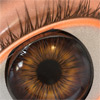@ginosso: I understand your problem. I'm not sure my use is the perfect way, but it looks approx. like it should do it. I will make a test with an archtecture background, than we will see what is happen. I feel, my log-lat format HDRI is good for a spherical use, because the image map show distortions at the poles, so that it could match to the uv distortion of a sphere. I don't, which format we should use instead. Sorry, english is not my native language, I hope you can understand me.
Diameter: This is not so easy. I use since a very long time HDRI spheres with Rhinoman|AIR and I have got good solutions with a sphere 5...10 times bigger as the scene. The best for the lighting would be, if the sphere is extrem big. For the DOF it is better, the geometry is like in the real world - if the HDRI show a room, use the size of the Room. Is the sphere to small, than the lighting of a plane table surface is not uniform, you can see the glowing surface around.
An other diameter problem is, that the viewangle of the camera should show the right area (I will call it field of view) of the HDRI. Is the sphere extrem big, you will get sometimes only a small field of the HDRI. The reason for this camera-sphere diameter dependent view is, that camera and sphere don't use the same center. So, you could set camera and sphere at the same center and not the scene in the middle. Maybe, this could be better. I think, I will test it with the archtecture HDRI (uffizi).
You HDRI questions are not stupid. It is an interesting subject and you find not so much literature about the usage. I'm curious about the discussions and tests in the future.

The next step after the HDRI sphere could be the composite work like here:
http://www.blochi.com/gfx/hdri/ Maybe, some body will start to try this.
@Desesee: "Micha, did not mean to hijack the conversation" - I'm not sure what you mean, my english is not so good. But, if you want to know more, let us talk about it.








 - By Mark Bell
- By Mark Bell - By Edward Leibnitz
- By Edward Leibnitz